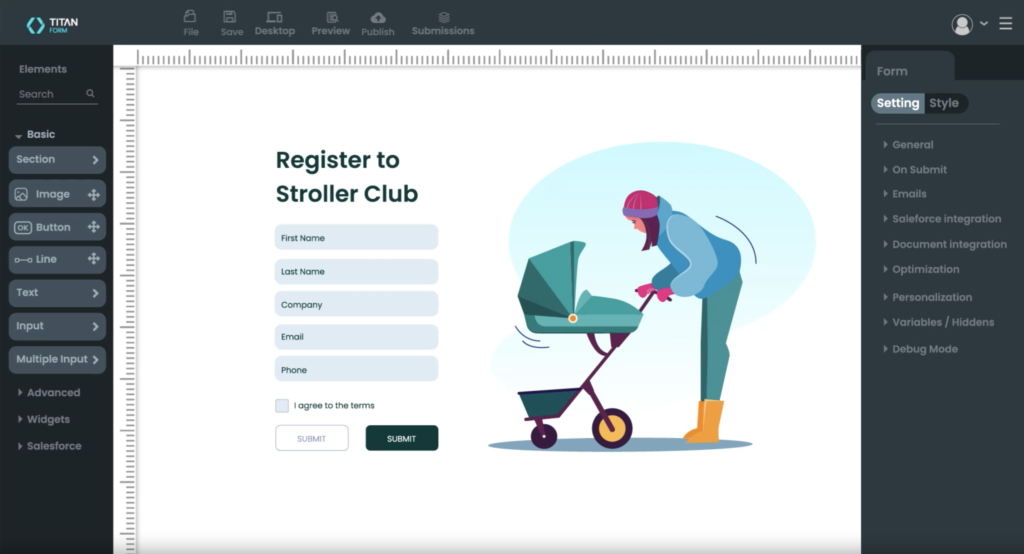
After over ten thousand votes and many years of waiting, Salesforce finally released Dynamic Forms in Winter '21. It is a more convenient and intuitive alternative to page layouts, which often caused unnecessary clutter and made data entry painful and difficult. In this article, we take a closer look at Dynamic Forms and explore the advantages of this feature. In particular, we focus on Dynamic Forms as a superior, user-friendly alternative to traditional Salesforce page layouts. Finally, we take a look at some of its biggest limitations and see if any third-party tools offer better solutions.
So let’s dive in.
Dynamic Forms 101
So what is Dynamic Forms? The purpose is to empower users to be able to place fields anywhere they want and not be limited to the Salesforce Lightning Page Layout or "Details" component when working on a Lightning Record Page. With Dynamic Forms, Salesforce users need only view the data and fields most relevant to them. Eliminating the need for multiple page layouts, it significantly accelerates loading times and enhances data entry accuracy. Salesforce administrators and developers benefit as Dynamic Forms eliminate the need to navigate messy, complex page layouts.

What are the Problems with Page Layouts for Salesforce?
So what are Page Layouts in Salesforce and what are the problems? Before Dynamic Forms came on the scene, you were able to enter display fields using page layouts. The issue is that page layouts limit your ability to customize field placement, confining them to predefined locations. Similarly, you can’t customize your page layout to suit your profile. The biggest problem is that, over time, adding fields and sections with page layouts makes managing data increasingly challenging. During the process, wasting precious time and compromising data accuracy integrity will occur.
Best Practices When Using Dynamic Forms
To optimize your experience with Dynamic Forms in Salesforce and prevent glitches, make sure you follow the best practices. Here are some of the biggest guidelines to bear in mind:
- Use Field Sections for desktop, do not include them in the mobile experience.
- If you use the same field repeatedly, this will keep displaying the same data.
- You can use the visibility rules to hide or show relevant information. However, watch out for known issues. For example, when cloning a record from page with visibility rules, system may apply these rules to the new record. If these rules do not apply to your new record then be sure to adjust them.
- When performing inline editing of fields, you may encounter several bugs that can prevent saving your work. This is particularly true if you do a quick action’s edit and click save.
- Many issues crop up if you choose to include both field sections and record detail components on the same page. Bugs may occur on save and cancel, malfunctioning visibility rules, and dynamic actions not functioning on custom objects, etc.
You can read more about best practices here.
Known Limitations
While Dynamic Forms have provided great innovation in the world of Salesforce and enhanced the user experience, this feature is not without known limitations. For one, until quite recently, it has not supported most of the standard objects in Salesforce. While Salesforce has pledged to make it available for all standard objects by the end of 2023, it is yet to be seen if this support is functioning optimally. Similarly, it does not provide support to all custom and standard Salesforce components.
Field management with Dynamic Forms comes with numerous roadblocks. For example, there is a limit of number of fields you can display at any one time and you can only include 100 fields in a Field Section component column and 100 sections for each region. If you exceed these limitations then the extra fields and sections will be left out when you import them from a Page Layout. Your only option is to add the remaining fields and sections manually. Furthermore, if you decide to merge two columns into one then only the first 100 fields will be included in your single column and the rest of your fields will be lost.
Another big issue is that if you choose to configure a complex form with a great number of conditions then there is a good chance you will run into performance issues. This is frustrating because one of the reasons many organizations looked forward to Dynamic Forms is that this feature was meant to streamline the management of more complex forms. You can of course get around these issues with Dynamic Forms by investing in custom development but this will require complex coding and a considerable amount of investment in terms of time and money.
Of course, these are not the only limitations but they are some of the biggest.
Is there an Alternative to Dynamic Forms?
What if you want to get all the advantages of Dynamic Forms, skip the hassle of the page layout editor in Salesforce, and ditch all of Dynamic Forms’ biggest problems? Well, a good idea is to start shopping around on the AppExchange and checking out some of the third-party form tools that integrate with Salesforce.
Titan Dynamic Forms is a robust alternative to Salesforce native solutions because these forms integrate with the #1 CRM in real-time, give you comprehensive customization options, and require no code to set up. Titan empowers you to create Dynamic Forms by working with any object, an unlimited number of fields, and absolutely no limits. In addition, Titan has a fully developed mobile experience for Dynamic Forms and is both fully scalable and flexible. With Titan, you get the best of Salesforce combined with the most cutting-edge innovation on the AppExchange. Here are some of the biggest perks:
- Pre-populated Dynamic Forms
- Validate data in real-time
- Work with any visibility rule or Lightning Record Page
- Customize your form using no-code
- Fully dynamic layouts
- Work with any object, data structure, and multiple objects
- Use junction objects, lookup fields, formulas, list views, and related lists as well as conditional logic to tailor the user experience
- Single Assignment Model

Summary
We hope you enjoyed this article and learned more about Dynamic Forms for Salesforce including its advantages and limitations. If you are looking for a stellar alternative, Titan is a solid option, why not check it out on the AppExchange today?
Leave a Reply